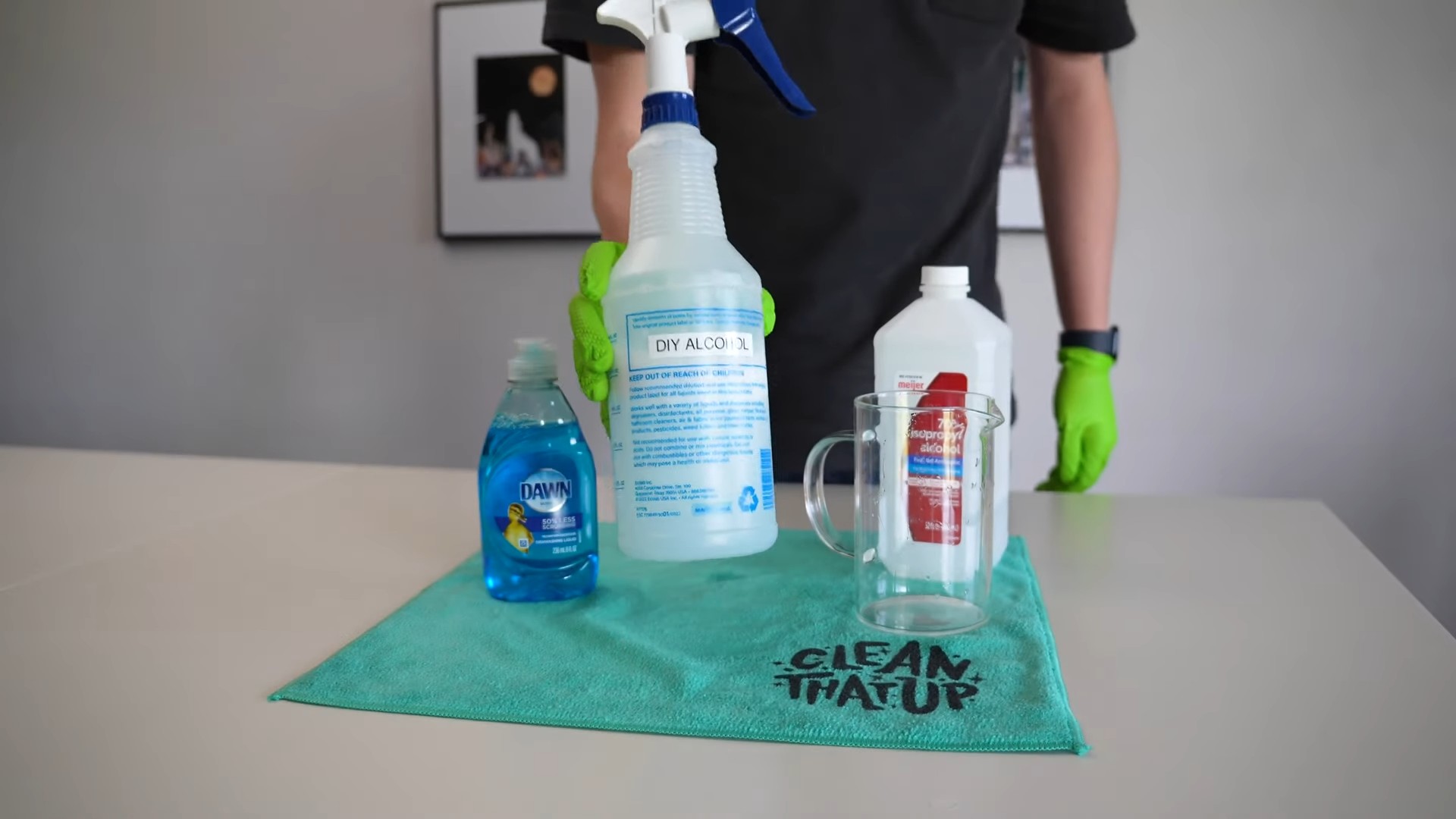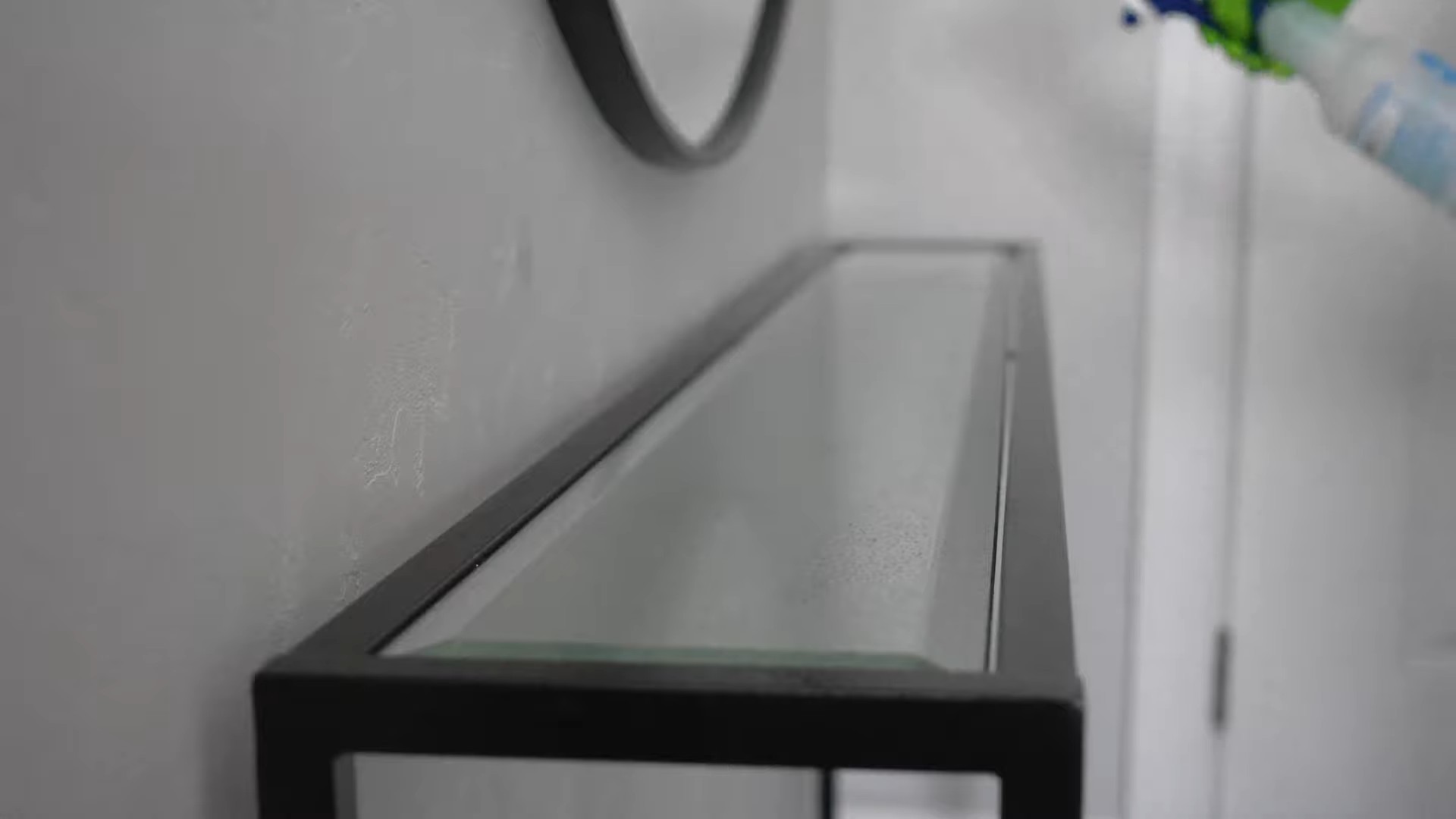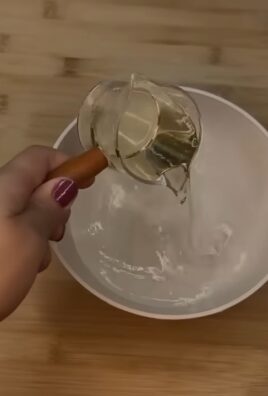Rubbing Alcohol Cleaning Hacks: Unlock the Sparkling Secrets of Your Home!
Ever feel like you’re battling a never-ending war against grime and germs? I know I have! But what if I told you the secret weapon you need is probably already sitting in your medicine cabinet? We’re diving deep into the world of rubbing alcohol cleaning hacks, and trust me, you’re going to be amazed at what this humble liquid can do.
While rubbing alcohol might not have a glamorous history steeped in ancient traditions, its modern-day applications are nothing short of revolutionary. From disinfecting wounds to creating DIY hand sanitizer, rubbing alcohol has long been a staple in homes worldwide. But its cleaning prowess often goes unnoticed. That’s where I come in!
In today’s fast-paced world, who has time to spend hours scrubbing? We all crave simple, effective solutions that save us time and money. That’s precisely why these rubbing alcohol cleaning hacks are a game-changer. I’m going to show you how to tackle everything from stubborn stains to lingering odors with this versatile and affordable cleaner. Get ready to transform your cleaning routine and reclaim your precious free time!

Unlocking the Cleaning Power of Rubbing Alcohol: Your Ultimate DIY Guide
Hey there, fellow DIY enthusiasts! I’m super excited to share some amazing cleaning hacks using something you probably already have in your medicine cabinet: rubbing alcohol (isopropyl alcohol). Seriously, this stuff is a cleaning powerhouse, and I’m going to show you how to use it to tackle all sorts of grime and messes around your house. Get ready to be amazed!
Why Rubbing Alcohol?
Before we dive in, let’s talk about why rubbing alcohol is such a fantastic cleaning agent. It’s a solvent, meaning it can dissolve a wide range of substances, including grease, oils, and even some types of ink. Plus, it’s a disinfectant, killing germs and bacteria on contact. And the best part? It evaporates quickly, leaving surfaces clean and streak-free.
Here’s a quick rundown of its benefits:
* Disinfectant: Kills germs and bacteria.
* Solvent: Dissolves grease, oil, and grime.
* Fast-drying: Leaves surfaces streak-free.
* Affordable: A budget-friendly cleaning solution.
* Versatile: Can be used on various surfaces.
Getting Started: Safety First!
Okay, before we get our hands dirty, let’s talk safety. Rubbing alcohol is flammable, so keep it away from open flames and heat sources. Always work in a well-ventilated area to avoid inhaling too many fumes. And, of course, keep it out of reach of children and pets. I always wear gloves when I’m using it for cleaning, just to protect my skin.
Hack 1: Sparkling Clean Windows and Mirrors
Tired of streaks on your windows and mirrors? Rubbing alcohol is your new best friend! This is one of my go-to cleaning methods.
What you’ll need:
* Spray bottle
* Rubbing alcohol (70% or 91% isopropyl alcohol works great)
* Distilled water (optional, but helps reduce streaks)
* Microfiber cloths
Step-by-step instructions:
1. Prepare your cleaning solution: In your spray bottle, mix equal parts rubbing alcohol and distilled water. If you’re using 91% alcohol, you might want to use slightly more water to dilute it a bit. If you only have rubbing alcohol, that’s fine too!
2. Spray the surface: Lightly spray the window or mirror with your rubbing alcohol solution. Don’t overdo it – a little goes a long way.
3. Wipe it down: Using a clean microfiber cloth, wipe the surface in a circular motion. Then, use a dry microfiber cloth to buff the surface until it’s sparkling clean. I like to use one cloth to clean and another to dry for the best results.
4. Admire your streak-free shine: Step back and admire your sparkling clean windows and mirrors!
Hack 2: Disinfecting Electronics
Our phones, tablets, and keyboards are germ magnets! Rubbing alcohol is perfect for safely disinfecting them.
What you’ll need:
* Rubbing alcohol (70% isopropyl alcohol is recommended)
* Cotton swabs
* Microfiber cloth
Step-by-step instructions:
1. Dampen a cotton swab: Dip a cotton swab into the rubbing alcohol, making sure it’s not dripping wet. You want it damp, not soaked.
2. Gently clean the surface: Carefully wipe down the surface of your phone, tablet, or keyboard with the damp cotton swab. Pay attention to areas that you touch frequently, like the screen, buttons, and edges. For keyboards, get in between the keys.
3. Dry with a microfiber cloth: Use a clean, dry microfiber cloth to wipe away any excess alcohol and dry the surface.
4. Let it air dry completely: Before using your device, let it air dry completely to ensure all the alcohol has evaporated. This usually only takes a few minutes.
Important Note: Avoid getting rubbing alcohol into any openings or ports on your electronic devices.
Hack 3: Removing Permanent Marker
Uh oh, permanent marker mishap? Don’t panic! Rubbing alcohol can often remove permanent marker from non-porous surfaces.
What you’ll need:
* Rubbing alcohol
* Cotton ball or clean cloth
Step-by-step instructions:
1. Test in an inconspicuous area: Before applying rubbing alcohol to the entire stain, test it in a small, hidden area to make sure it doesn’t damage the surface.
2. Apply rubbing alcohol: Dampen a cotton ball or clean cloth with rubbing alcohol.
3. Gently rub the stain: Gently rub the stained area with the alcohol-soaked cotton ball or cloth. You might need to apply a little pressure, but avoid scrubbing too hard, as this could damage the surface.
4. Wipe away the residue: As the marker starts to dissolve, wipe away the residue with a clean cloth.
5. Repeat if necessary: If the stain is stubborn, repeat steps 3 and 4 until it’s completely removed.
6. Clean the surface: Once the stain is gone, clean the surface with soap and water to remove any remaining alcohol residue.
Important Note: This hack works best on non-porous surfaces like plastic, metal, and glass. It may not be as effective on porous surfaces like fabric or wood.
Hack 4: Cleaning Jewelry
Give your jewelry a sparkling makeover with rubbing alcohol! It’s a gentle and effective way to remove dirt, grime, and oils.
What you’ll need:
* Rubbing alcohol
* Small bowl
* Soft-bristled toothbrush (an old toothbrush works great!)
* Clean cloth
Step-by-step instructions:
1. Soak your jewelry: Pour some rubbing alcohol into a small bowl and soak your jewelry for about 10-15 minutes.
2. Gently scrub: After soaking, use a soft-bristled toothbrush to gently scrub your jewelry, paying attention to any nooks and crannies where dirt might be hiding.
3. Rinse with water: Rinse your jewelry thoroughly with clean water to remove any remaining alcohol and dirt.
4. Dry with a clean cloth: Pat your jewelry dry with a clean cloth.
5. Admire the sparkle: Enjoy your newly cleaned and sparkling jewelry!
Important Note: Avoid using this method on delicate gemstones or pearls, as rubbing alcohol can damage them.
Hack 5: Deodorizing Shoes
Stinky shoes? Rubbing alcohol to the rescue! It can kill the bacteria that cause shoe odor.
What you’ll need:
* Spray bottle
* Rubbing alcohol
Step-by-step instructions:
1. Prepare your spray: Pour rubbing alcohol into a spray bottle.
2. Spray the inside of your shoes: Generously spray the inside of your shoes with rubbing alcohol, making sure to cover all areas.
3. Let them air dry: Allow your shoes to air dry completely. This may take several hours, depending on how wet they are.
4. Enjoy fresh-smelling shoes: Once your shoes are dry, they should be much fresher and less smelly!
Pro Tip: For extra odor-fighting power, sprinkle some baking soda inside your shoes before spraying them with rubbing alcohol.
Hack 6: Removing Hairspray Buildup from Hair Tools
Hairspray can leave a sticky residue on your hair tools, making them less effective. Rubbing alcohol can easily remove this buildup.
What you’ll need:
* Rubbing alcohol
* Cotton ball or clean cloth
Step-by-step instructions:
1. Unplug your hair tools: Make sure your hair tools are unplugged and completely cool before cleaning them.
2. Dampen a cotton ball or cloth: Dampen a cotton ball or clean cloth with rubbing alcohol.
3. Wipe down the surface: Gently wipe down the surface of your hair tools with the alcohol-soaked cotton ball or cloth, removing any hairspray buildup.
4. Dry with a clean cloth: Use a clean, dry cloth to wipe away any excess alcohol and dry the surface.
Important Note: Avoid getting rubbing alcohol inside the electrical components of your hair tools.
Hack 7: Cleaning Stainless Steel Appliances
Rubbing alcohol can help remove fingerprints and smudges from stainless steel appliances, leaving them looking shiny and new.
What you’ll need:
* Spray bottle
* Rubbing alcohol
* Microfiber cloth
Step-by-step instructions:
1. Prepare your spray: Pour rubbing alcohol into a spray bottle.
2. Spray the surface: Lightly spray the stainless steel surface with rubbing

Conclusion
So, there you have it! Rubbing alcohol, that unassuming bottle in your medicine cabinet, is a veritable powerhouse of cleaning potential. We’ve explored a range of applications, from banishing stubborn stains to sanitizing surfaces and even reviving tired electronics. But why is this DIY approach a must-try? It boils down to effectiveness, affordability, and accessibility. Commercial cleaners often come with a hefty price tag and a laundry list of harsh chemicals. Rubbing alcohol, on the other hand, is readily available at most drugstores and supermarkets, and its potent disinfecting properties make it a safe and efficient alternative for many household tasks.
Beyond the core applications we’ve discussed, the beauty of rubbing alcohol lies in its versatility. Consider these variations to further customize your cleaning routine:
* **Scented Sanitizer:** Add a few drops of your favorite essential oil (lavender, tea tree, or lemon are excellent choices) to your rubbing alcohol solution for a pleasant aroma while you disinfect.
* **Streak-Free Window Cleaner:** Combine rubbing alcohol with water and a splash of white vinegar for a homemade window cleaner that rivals store-bought brands.
* **Grease-Fighting Power:** For particularly stubborn grease stains on stovetops or ovens, pre-treat the area with a paste of baking soda and water before applying rubbing alcohol.
* **Mold and Mildew Remover:** In well-ventilated areas, rubbing alcohol can be used to combat mold and mildew growth. Spray the affected area, let it sit for a few minutes, and then scrub with a brush. Always test in an inconspicuous area first.
* Extend the life of your razor blades: Soaking your razor blades in rubbing alcohol after each use can help to disinfect them and prevent rust, extending their lifespan.
The possibilities are truly endless! We’ve only scratched the surface of what this simple solution can achieve. The key is to experiment, adapt, and discover what works best for your specific needs and cleaning challenges.
We wholeheartedly encourage you to embrace these rubbing alcohol cleaning hacks and experience the difference for yourself. Not only will you save money and reduce your reliance on harsh chemicals, but you’ll also gain a newfound appreciation for the power of simple, effective solutions.
Don’t just take our word for it – give it a try! We’re confident that you’ll be amazed by the results. And most importantly, we want to hear about your experiences. Share your own rubbing alcohol cleaning triumphs, tips, and tricks in the comments below. Let’s build a community of savvy cleaners who are harnessing the power of this incredible DIY solution. What unexpected uses have you discovered? What challenges have you overcome? Your insights could inspire others to unlock the full potential of rubbing alcohol in their own homes. So, go ahead, experiment, share, and let’s revolutionize the way we clean, one rubbing alcohol hack at a time!
Frequently Asked Questions (FAQs)
Is rubbing alcohol safe to use on all surfaces?
While rubbing alcohol is generally safe for many surfaces, it’s crucial to exercise caution and test in an inconspicuous area first, especially on delicate or painted surfaces. Avoid using it on shellacked, lacquered, or varnished wood, as it can damage the finish. Leather and some plastics may also be sensitive to rubbing alcohol. Always dilute the alcohol with water for sensitive surfaces. When in doubt, consult the manufacturer’s instructions for the specific surface you’re cleaning.
What is the best concentration of rubbing alcohol to use for cleaning?
The ideal concentration of rubbing alcohol for cleaning and disinfecting is typically between 70% and 99% isopropyl alcohol. While 99% alcohol is more potent, it evaporates quickly, which may not allow sufficient contact time for effective disinfection. A 70% solution is often preferred because the water content helps to slow down evaporation, allowing the alcohol to penetrate cell walls more effectively and kill bacteria and viruses. Both concentrations are effective, but consider the surface and the desired outcome when choosing.
Can I use rubbing alcohol to disinfect my hands?
Yes, rubbing alcohol with a concentration of 60% to 95% is effective at killing germs on your hands. However, frequent use can dry out your skin. It’s best to use hand sanitizer containing moisturizers or to apply lotion after using rubbing alcohol to prevent dryness. For regular handwashing, soap and water are still the preferred method, especially when hands are visibly dirty.
Is rubbing alcohol flammable?
Yes, rubbing alcohol is highly flammable and should be handled with care. Keep it away from open flames, sparks, and heat sources. Store it in a tightly sealed container in a cool, well-ventilated area, away from direct sunlight. Never use rubbing alcohol near a lit stove or while smoking.
Can I mix rubbing alcohol with other cleaning products?
It’s generally not recommended to mix rubbing alcohol with other cleaning products, especially bleach. Mixing rubbing alcohol with bleach can create toxic fumes that can be harmful to your health. Always use rubbing alcohol on its own or diluted with water. If you’re unsure about mixing it with another product, err on the side of caution and avoid it.
How should I dispose of rubbing alcohol?
Dispose of rubbing alcohol properly by pouring it down the drain with plenty of water. Ensure that the drain is connected to a municipal sewer system. Never pour rubbing alcohol into storm drains or onto the ground, as it can contaminate the environment. If you have a large quantity of rubbing alcohol to dispose of, contact your local waste management facility for guidance.
Can rubbing alcohol remove permanent marker stains?
Yes, rubbing alcohol can be effective at removing permanent marker stains from various surfaces. Apply rubbing alcohol to a clean cloth and gently blot the stain. Avoid rubbing vigorously, as this can spread the stain. Repeat the process until the stain is removed. For stubborn stains, you may need to let the rubbing alcohol sit on the stain for a few minutes before blotting. Always test in an inconspicuous area first.
Can rubbing alcohol be used to clean electronics?
Yes, rubbing alcohol can be used to clean electronics, but it’s essential to use it safely. Always turn off and unplug the electronic device before cleaning. Use a cotton swab or microfiber cloth dampened with rubbing alcohol to gently clean the surface. Avoid getting any liquid inside the device. Allow the alcohol to evaporate completely before turning the device back on. Use a high concentration (90% or higher) of isopropyl alcohol for cleaning electronics, as it evaporates quickly and leaves less residue.
How can I use rubbing alcohol to remove sticky residue?
Rubbing alcohol is excellent for removing sticky residue from labels, tape, and other adhesives. Simply soak a cotton ball or cloth with rubbing alcohol and apply it to the sticky residue. Let it sit for a few minutes to soften the adhesive, then gently wipe it away. For stubborn residue, you may need to repeat the process or use a plastic scraper to help remove it.
Is rubbing alcohol effective against viruses like the flu or common cold?
Yes, rubbing alcohol is effective against many viruses, including the flu and common cold viruses. It works by denaturing the proteins and lipids that make up the virus, effectively inactivating it. Use rubbing alcohol with a concentration of 60% to 95% to disinfect surfaces and kill viruses. Remember to allow sufficient contact time (at least 30 seconds) for the alcohol to work effectively.




Leave a Comment